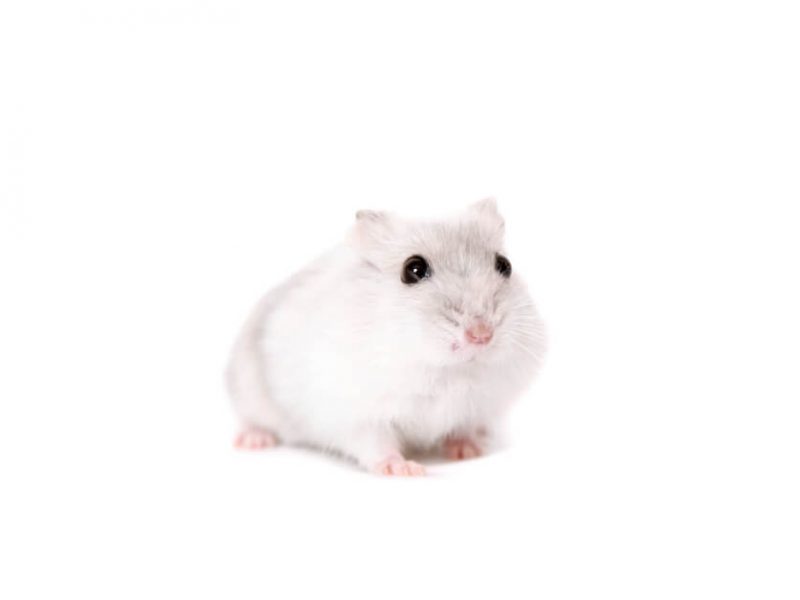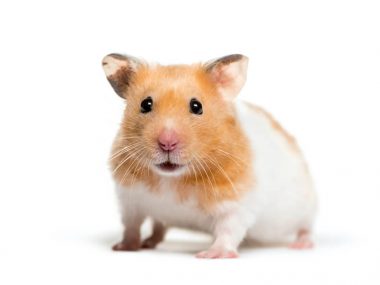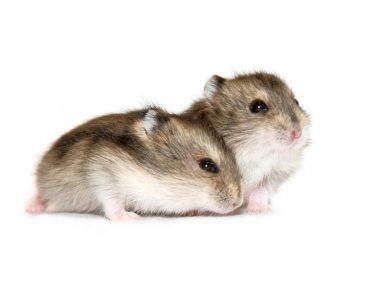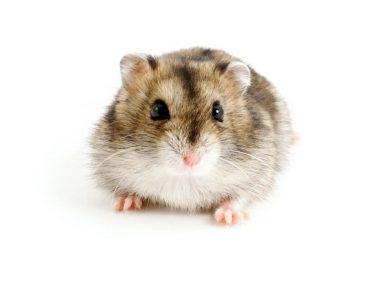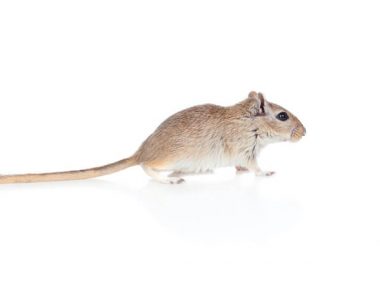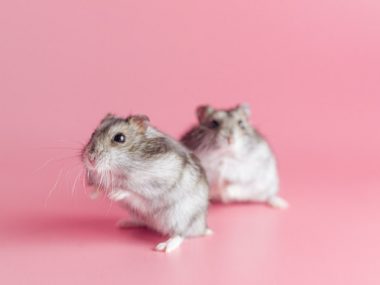An animal’s ability to change colors is mesmerizing. What if we were to tell you we have a little hamster that does just that? Now that we’ve tickled your curiosity, you’ll want to find out more about the incredible winter white dwarf hamster.
Table of Contents
What Is A Winter White Dwarf Hamster?
A Winter White Dwarf hamster is a Djungarian hamster (Phodopus sungorus.) When it comes to the classification of any hamster species, this is perhaps the most confusing. What once were several separate species of hamsters has since become classified as one species.
Below is a taxonomic tree of the Djungarian hamster. The Laboratory of Animal Medicine explains how each falls within this tree. The hamster community uses certain terms/names when referring to Djungarian hamsters and may go as far as claiming these terms/names to be a “type” of Djungarian hamster.
Species: Phodopus sungorus (Djungarian hamster)
Also referred to as:
- Winter White Dwarf
- Winter White
- White Dwarf
- Winter White Russian Dwarf
- Siberian
- Russian Dwarf
Branching off of the Djungarian species is a subspecies known as the Campbell Dwarf.
Subspecies of Djungarian: Phodopus campbelli (Campbell hamster)
Where Do Winter White Dwarf Hamsters Come From?
Winter White Dwarfs (Djungarian hamsters) are native to parts of Russia which lend to it being referred to as a Winter White Russian or Russian Dwarf. They are also native to Mongolia, parts of China, and parts of Kazakhstan. Regardless of what country their native habitat falls, the climate in these areas is harsh come wintertime.
Winter White Dwarf Hamster Characteristics and Traits
As we cover the various physical attributes of the Winter White, remember that we are talking about the Djungarian species (Phodopus sungorus.)
Winter White Dwarf Hamster At A Glance
- Coat: short-hair
- Colors: brownish-gray, winter color changes to cream or white
- Patterns: roan, dominant spot
- Self or Agouti: self, possibly slight agouti
- Eyes: black or red
- Size: 3-4 inches
- Lifespan: 1-2 years
- Diet: herbivore, granivore
- Temperament: high energy
- Level of care: moderate
Winter White Dwarf Hamster Coat Characteristics
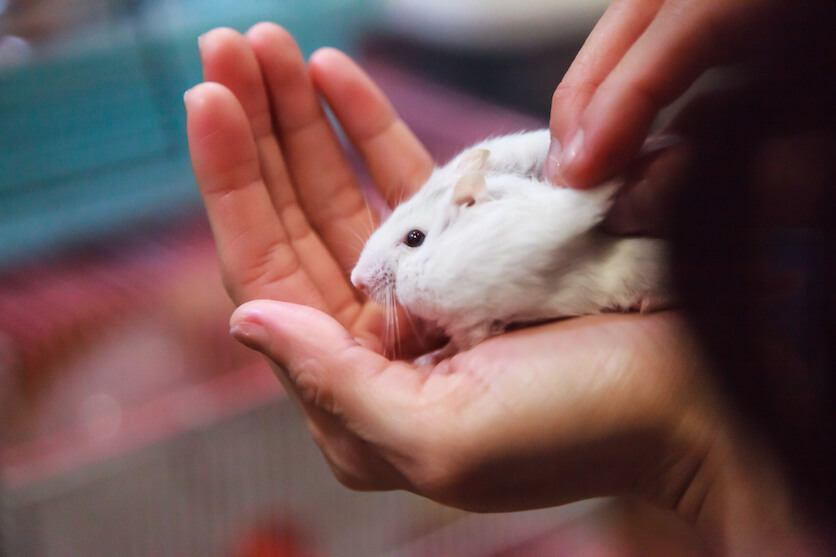
Now we are going to reveal the coloring-changing abilities of this little hamster! We will zero in on the climate of their native range because it plays a vital role in a change of color. You are probably scratching your head, wondering how on earth can a hamster change color.
The native playground of Winter Whites spreads through the corners where Russia, Mongolia, China, and Kazakhstan meet. Winters in this area are harsh. Cold, frigid temperatures plummet as snow blankets the earth day after day.
To compensate for drastic seasonal changes, Winter Whites (Djungarians) are designed to molt as days and nights begin to cool off. Their darker summer coat gives way to a more dense, warmer white winter coat. The dark stripe down their back is still present, as is their white underside.
The Cambridge Philosophical Society’s Biological Reviews published an excerpt on the notable difference of Winter White’s summer coat compared to a winter coat. When this hamster molts, the lighter summer coat is replaced by hairs that are uniquely designed to provide better insulation. The hair shafts of the winter coat are white, larger, and composed of cells that are filled with air. The white coloring of their coat acts as a protective mechanism so they’ll blend in with their background (snow).
Typical Coat Features
- Roan
- Predominantly cream or white
- Head may be heavily colored or have no color
- Head coloring tapers off, becoming pale or disappearing towards the tail
- May have red eyes
- Dominant Spot
- Predominantly white with random patches or spots of color
- Agouti
- Crescent shape is present on the cheek
- The abdomen area is lighter
Eyes, Ears, and Tail Characteristics
Winter white dwarf hamsters feature different eye colors that can range from black to red. Some may even have pink eyes. Those with red or pink eyes are especially attractive because of the pop of color against their white winter coat.
When this hamster turns white come wintertime, you’ll notice a slight gray/silver appearance of their ears and part of their head. This, along with a white coat, is stunning!
Overall, dwarf hamsters have a rather tail-less appearance because of having a stubby tail.
How Big Can A Winter White Dwarf Hamster Get?
Winter White Dwarfs (Djungarians) are very small. They will grow to be about the size of a golf ball, weighing in at only 1-2 ounces. Females are smaller, weighing about 1.5 ounces and reaching about 3″ in length, whereas males are about 4″ long and weigh about 2 ounces.
Winter White Dwarf Hamster Lifespan
Hamsters do not have the longevity that other common pets do. In fact, they have a very short lifespan of only 1-3 years. A hamster raised in ideal conditions typically doesn’t outlive their projected lifespan.
Unfortunately, their life can be cut short should they become ill or suffer from injuries such as jumping and falling to the floor. Other factors that play a role in shorter longevity are chewing on dangerous things such as electrical wires, eating things that a hamster shouldn’t eat, or genetic predisposition.
Winter White Dwarf Hamster Behavior
All dwarf hamsters are known for being a bit on the jumpy side, both physically and mentally. They are notorious for jumping out of your hands. Psychologically, these little guys are like a ball of nerves in a constant state of hypervigilance. They tend to become easily stressed. Compared to other dwarf species (Roborovskis), Winter Whites (Djungarians) are easier to handle and tame.
Do Winter White Dwarf Hamsters Like To Be Held?
Any hamster will only be “holdable,” providing they go through handling/taming. It’s the only way to gain their trust where they are comfortable with being picked up and held.
How Do You Tame A Winter White Dwarf Hamster?
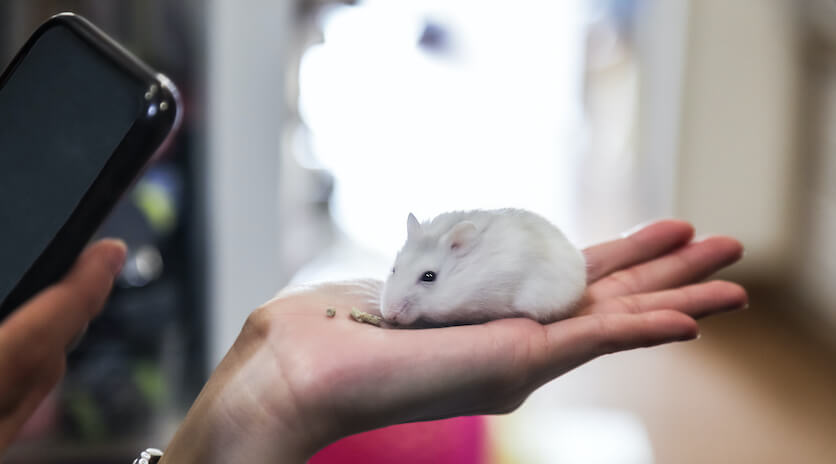
Handling is taming, in case you are wondering. Your hands, voice, and patience are the tools that tame a hamster. Once you bring your new hammie home, your work begins.
Bringing Your Hamster Home
Day 1-3
- This is the acclimation period to allow your hamster to get used to its environment.
- Ensure its cage is in a quiet, peaceful area but close enough to hear your voice.
- The only time you should reach into the cage during this period is to clean, feed, and water.
- By putting a small piece of fabric with your scent on it inside the cage, your hamster will become acquainted with your scent.
- Prevent small children and pets from having access to the cage.
- Talk to your hamster as much as you can in a normal voice.
Daily Handling/Taming
Day 3 (and daily thereafter). Each handling session should be between 10-15 minutes and be done in the late evening (because hamsters are day sleepers and active at night.)
- Choose an area for handling that is confined and on the floor.
- A children’s little wading pool or pet playpen is ideal for sitting in to handle your hamster.
- Be sure to thoroughly wash your hands before and after each handling session.
- As you reach into its cage to get it, talk softly. Your hand should be cupped to be able to scoop it up or allow it to walk up onto it. Never grab a hamster because it may bite.
- Remember that your hamster is high strung and not prone to sit still. Be prepared for it to try to jump out of your hands. It might be best to allow it to run around inside the handling area (pool, playpen, etc.) while you are talking to it.
- Once you are done handling and place the hamster back into the cage, reward it with a treat.
How To Care For A Winter White Dwarf Hamster
Before bringing any pet home, whether it’s a dog, cat, bird, or hamster, you should have its area set up and ready. Your hamster’s cage should have everything in it and be properly placed. By doing this, you reduce the stress it will be under as it arrives in a new place.
Winter White Dwarf Hamster Cages
A hamster’s cage is its “castle” and should be a clean, safe, comfortable, and stimulating place to be.
What Are The Simple Necessities For A Winter White Dwarf Hamster?
- Nesting box
- Bedding (cedar and pine shavings should never be used)
- Wheel
- Water bottle
- Food bowl
- Other toys such as balls or tubes
Cage Placement
It helps to know where a hamster cage should and should not be placed in or near. Your hamster will appreciate it!
The ideal place for a cage is:
- In a room where it’s 64-79 degrees (F.)
- A place where it’s not loud and noisy.
- Away from exterior doors, windows, air vents, fans, and heaters.
- On top of a sturdy table or cabinet.
- Where pets and small children cannot access the cage.
- A place near you.
What Do Winter White Dwarf Hamsters Eat?
A hamster diet should consist of good-quality hamster pellet food. Giving it an occasional treat is something your hamster enjoys.
Toxic Foods To Avoid:
- Alcohol
- Caffeine (chocolate, tea, coffee, etc.)
- Citrus (oranges, lemons, limes, grapefruit, etc.)
- Nightshade vegetables (potatoes, tomatoes)
- Onions
- Garlic
Do Winter White Dwarf Hamsters Change Color?
Winter Whites have the amazing ability to go from a dark gray summer coat to a gleaming silvery/white coat as days and nights begin to grow cold. This color change occurs to protect them as their environment changes with the seasons.
Are Winter White Dwarf Hamsters Friendly?
For any hamster species to be friendly, they must be handled/tamed. Without adequate handling/taming, they will be skittish and be prone to bite.
Do Winter White Dwarf Hamsters Bite?
Hamster bites, whether it’s a dwarf or Syrian, occur from several things. Lack of handling/taming, being startled (awakened suddenly, frightened, etc.,) or being in pain may result in being bitten.
How Much Does A Winter White Dwarf Hamster Cost?
- Winter White Dwarf hamster: $12 – $30 (USD)
- Cage: $15 – $300 (USD)
- Accessories (wheel, nesting box, bedding:) $30 – $65 (USD)
- Food: $5 – $15 (USD)
Is The Winter White A Winner?
Now you have it in a nutshell; a guide for everything to know about a Winter White Dwarf Hamster. You have enough information to be able to decide whether one of these little guys is a good fit for you and your household.
